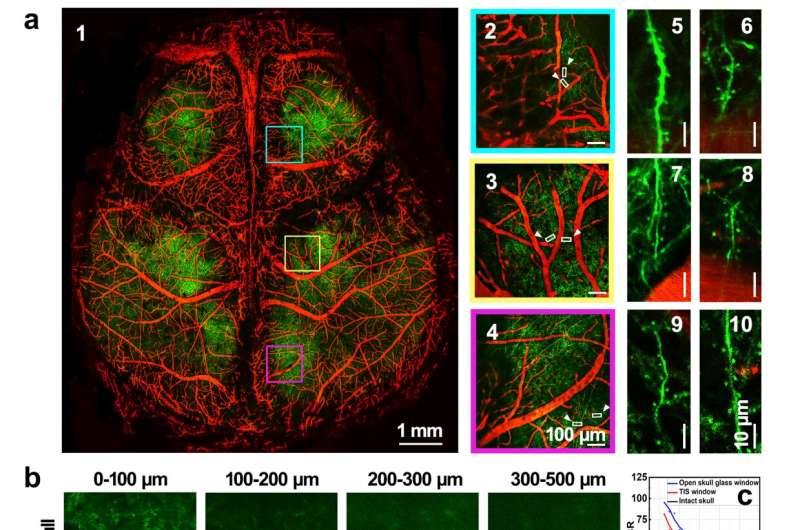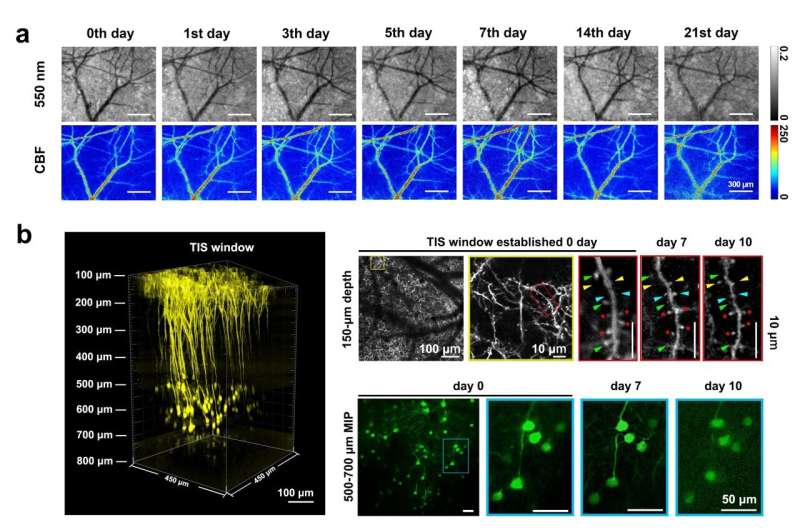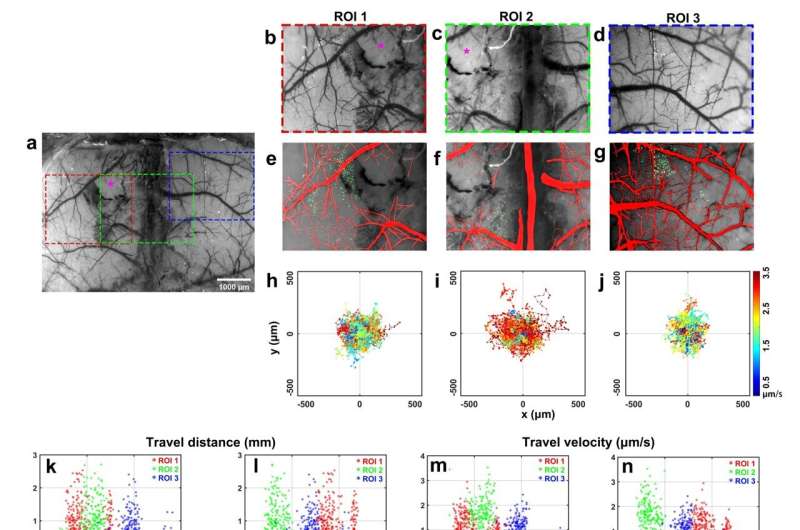New approach to brain imaging leaves skulls intact in mice

Observing the brain without creating any breaks in the skull is an emerging technology for those studying various brain-related diseases. Current technology is advancing, but issues around light penetration, limited imaging quality and cortex depth significantly inhibit its progress. It has led to the current use of "skull windows."
The open-skull glass window and thinned-skull window are the two most widely used skull window techniques. The open-skull glass window requires the removal of part of the skull and covering the brain with a transparent glass slide. The thinned-skull window involves grinding part of the skull extremely thin (<25 μm) to allow light penetration. Chemical agent-based skull windows capable of rendering the skull more transparent to light have been developed in recent years.
None of these skull windows is adequate for large-scale high-resolution continuous observation of some acute brain disease models. It is particularly the case in acute traumatic brain injury (TBI), which is common in an estimated 69 million patients worldwide. External forces tend to cause TBI, triggering a series of brain dysfunctions.
Thus, developing a skull window technique that can meet all the requirements while being useful for studies is pivotal.
In a new paper published in eLight, a team of scientists led by Professor Dan Zhu of Huazhong University of Science and Technology studied the techniques behind skull windows. Their paper, titled " A through-intact-skull (TIS) chronic window technique for cortical structure and function observation in mice," has demonstrated a new and unique technique that has the potential to save lives.

The researchers created a chronic skull optical clearing window called the "through-intact-skull window (TIS window)." Through their experiments on mice, they no longer needed to remove any pieces of the skull. By skipping craniotomy and removing a portion of the skull, the researchers got a bilateral field of view for tracking immune response to acute TBI at the single-cell resolution level.
They also found that their technique could work in most applications in which current skull windows are used. Therefore, this novel technology can be used in various applications of in vivo cortical visualization and holds great potential in brain science investigations.

The researchers evaluated the characteristics of the TIS window and demonstrated its 900-μm imaging depth, dendrite spine resolution ability, long-term observation capability for weeks, and suitability for awake animals. The craniotomy-free TIS window has advantages over many existing techniques. It is capable of continuous cortical monitoring at high resolution and on a centimeter-scale, with minimal influence on the brain environment.
Therefore, the TIS window technique holds great potential for physiological and pathological research in brain science.
More information: eLight (2022). DOI: 10.1186/s43593-022-00022-2

















